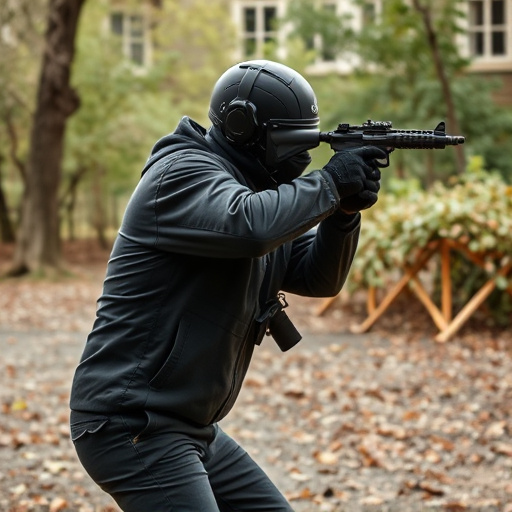Non-lethal self-protection devices like stun guns rely on rechargeable batteries for effectiveness. To maximize battery life and reliability, follow these steps: choose models with adjustable output levels and long-lasting batteries, avoid complete discharge by regularly recharging, store at optimal temperatures away from direct sunlight, clean device contacts, use high-quality batteries, inspect for damage, follow manufacturer charging and storage instructions, train on dummy targets, stay informed about local regulations regarding stun guns, and maintain regular battery care according to the manufacturer's guidelines.
“Discover the power of non-lethal self-protection with our comprehensive guide. In today’s world, personal safety is paramount, and stun guns offer a viable option for deterring potential threats without causing permanent harm. From understanding key components like voltage and polarity to choosing the right model for your needs and legal considerations in various regions, this article covers all aspects of stun gun ownership. Learn essential maintenance tips, including how to maximize battery life—a crucial aspect often overlooked but vital for reliability when facing dangerous situations.”
- Understanding Non-Lethal Self-Protection Devices: A Comprehensive Overview
- Key Components and Features to Look for in a Stun Gun
- How to Choose the Right Stun Gun for Your Needs
- Maintaining Optimal Battery Life: Tips and Tricks
- Safety Precautions and Training for Effective Use
- Legal Considerations: Navigating Regulations for Stun Guns
Understanding Non-Lethal Self-Protection Devices: A Comprehensive Overview
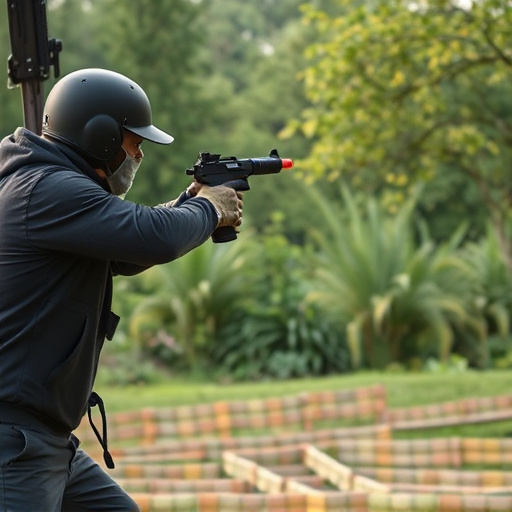
Non-lethal self-protection devices, such as stun guns, offer a powerful tool for personal safety without causing permanent harm. These devices use electric current to temporarily disable an aggressor, providing enough time for escape or assistance to arrive. Understanding their mechanics and proper use is essential for effective self-defense. Stun guns operate by delivering a strong electrical discharge through two metal probes, disrupting muscles and causing intense pain, disorientation, and temporary paralysis.
Maintaining optimal battery life is crucial for ensuring the reliability of these devices when needed most. Stun gun batteries require specific care to prolong their lifespan. Regular cleaning, including removing any built-up residue or debris, can prevent corrosion on the battery terminals. Additionally, storing the device in a cool, dry place and avoiding extreme temperatures will safeguard its performance and extend battery life. Proper usage involves understanding the device’s activation mechanism and practicing safe handling techniques, which not only ensures effectiveness but also prevents accidental discharge.
Key Components and Features to Look for in a Stun Gun

When selecting a stun gun, several key components and features deserve your attention. One of the most critical aspects is the device’s power source—typically a rechargeable battery. Understanding how to maintain stun gun battery life is essential for ensuring its reliability when you need it most. Look for models with long-lasting batteries that can withstand frequent use; some advanced options even feature indicators to notify users when a charge is required.
Additionally, the stun gun’s output and voltage are crucial. Higher voltage typically delivers a more powerful shock, but it’s essential to find a balance between effectiveness and safety. Features like adjustable output levels allow users to tailor the device to various situations, ensuring optimal performance while preserving battery life for extended use.
How to Choose the Right Stun Gun for Your Needs
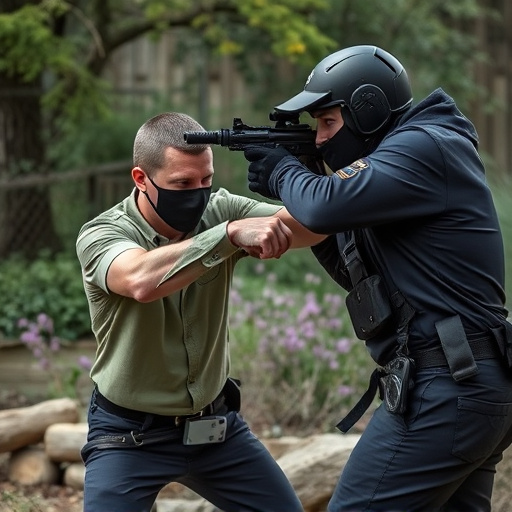
Choosing the right stun gun involves understanding your personal safety needs and the device’s specifications. First, consider where and how you’ll be using it – self-defense in close quarters or long-range deterrence? Different stun guns offer varying voltage levels and shot ranges; select one that aligns with your comfort level and potential scenarios.
Battery life is a crucial aspect to consider when maintaining your stun gun. High-quality devices often come with rechargeable batteries, allowing you to minimize costs over time. Regularly inspect the battery status and keep it charged, as a depleted stun gun might not provide adequate protection when needed most.
Maintaining Optimal Battery Life: Tips and Tricks
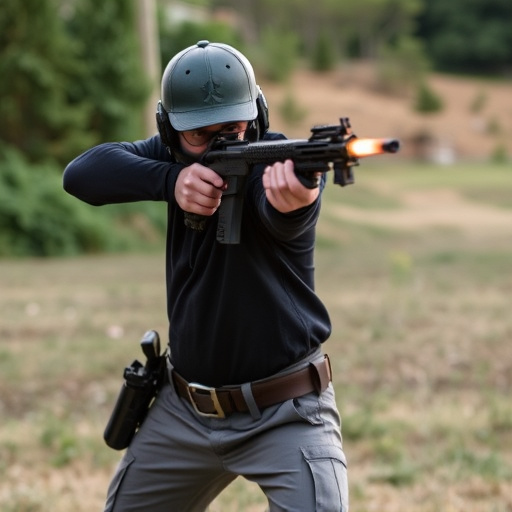
To maximize the lifespan of your non-lethal self-protection device, specifically a stun gun, understanding and implementing proper battery care is paramount. Stun guns rely on robust batteries to deliver the required electric shock, so regular maintenance is crucial. One effective tip is to avoid complete discharge. Regularly recharge your device before the battery reaches zero, as frequent deep discharge can degrade its health over time. Many modern stun guns come with smart chips that monitor battery usage, indicating when it’s time for a recharge.
Additionally, storing your stun gun in optimal conditions enhances battery life. Keep it away from extreme temperatures and direct sunlight. Ideal storage is at room temperature, in a cool, dry place. Using protective cases or holsters can also prevent physical damage that might impact performance. Regular cleaning of the device’s contacts ensures smooth current flow, preventing any power loss due to corroded connections. Lastly, consider using high-quality batteries recommended by the manufacturer, as they are designed to withstand the specific requirements of your stun gun model.
Safety Precautions and Training for Effective Use

When it comes to non-lethal self-protection devices like stun guns, safety precautions and proper training are paramount for effective use. It’s crucial to understand the device’s operating mechanism and safety features inside and out. Always inspect your stun gun regularly, ensuring all components are in good working order, especially the battery, as maintaining optimal battery life is essential for its functionality. Read the manufacturer’s instructions thoroughly, including guidelines on charging and storage, to prolong the lifespan of the battery.
Training is vital to ensure you can deploy the device instinctively and accurately during an emergency situation. Practice with a training dummy or target to familiarize yourself with the stun gun’s range, activation mechanism, and the effects it delivers. Learn how to maintain proper grip and body positioning for maximum impact while minimizing risks of accidental discharge. Regularly scheduled refresher courses are beneficial to keep your skills sharp and stay updated on any new features or safety protocols related to your specific model.
Legal Considerations: Navigating Regulations for Stun Guns
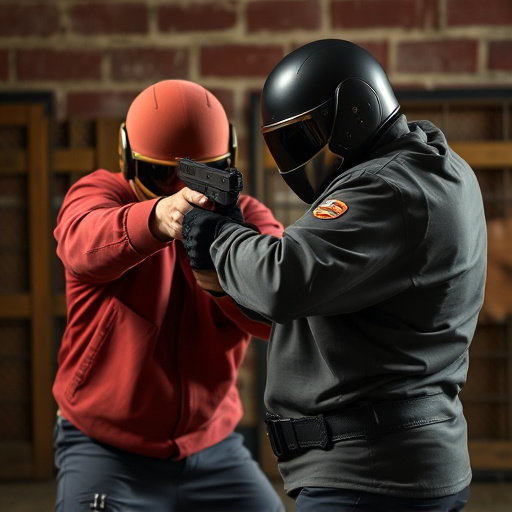
When considering a non-lethal self-protection device like a stun gun, understanding legal considerations is paramount. Stun guns, also known as electronic control devices (ECDs), are subject to strict regulations that vary widely depending on your location. In many regions, these devices are classified as firearms and require specific licenses, permits, or registration. Additionally, there are restrictions on where and how they can be carried, sold, and used.
To maintain the legality of your stun gun, it’s crucial to stay informed about local laws. Check with your state or regional authorities to understand the rules regarding stun guns, including any requirements for battery life, device functionality, and safety precautions. Proper battery care is also essential—many stun guns use replaceable batteries that require regular maintenance to ensure optimal performance. Following manufacturer guidelines on how to maintain stun gun battery life will help ensure your device remains reliable when you need it most.
In conclusion, non-lethal self-protection devices, particularly stun guns, offer a crucial option for personal safety. By understanding their key components, choosing the right model for your needs, maintaining battery life, and adhering to legal regulations, you can ensure effective and responsible use. Remember, proper training and safety precautions are essential to make informed decisions in potentially dangerous situations. With the right knowledge and tools, individuals can take control of their safety without resorting to lethal force.
